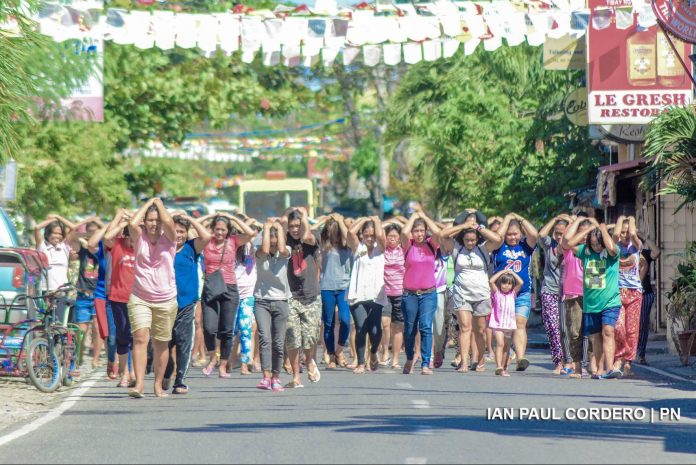
ILOILO City – It is possible to reduce the impacts of earthquakes to human lives and properties, according to Undersecretary Reynaldo Mapagu of the Department of National Defense’s Civil Veterans and Retiree Affairs.
“Readiness is the key,” he stressed yesterday before the start of the 1st Quarter National Simultaneous Earthquake Drill here.
Iloilo City was the ceremonial venue of the drill – one of the country’s “most progressive cities but prone to various hazards”, according to Undersecretary Renato Solidum Jr. of the Department of Science and Technology – Philippine Institute of Volcanology and Seismology (DOST-Phivolcs).
With “political will and intense determination, we can reduce the impacts,” said Mapagu.
He stressed the importance of having earthquake-resilient buildings.
Solidum agreed. “We need to reduce the potential risk of the people of Iloilo City. How? By ensuring that offices, buildings, malls, and churches can withstand a very large earthquake. We must also respond immediately and properly to further reduce casualties,” he said.
Earthquake drills must also be done regularly, added Mapagu.
These drills empower people to be “resilient survivors”, he explained.
“Through this, we could also assess the strengths of our earthquake disaster plan, the gaps that need to be filled and the areas of opportunities we need to improve to make our disaster resilience measures more efficient, more responsive and more accurate,” said Mapagu.
The proposal to transform the Office of Civil Defense to “full department status” could also help, Mapagu added.
The Philippines is within the so-called “Ring of Fire” in the Asia-Pacific – a belt of earthquake-prone areas.
Yesterday’s drill simulated the Jan. 25, 1948 earthquake that hit Panay Island, destroyed 55 Spanish-era stone churches and triggered a tsunami. There were five “impact areas” – Iloilo City Hall, Iloilo Mission Hospital, Iloilo Business Park/Megaworld, SM City Iloilo, and Barangay Sto. Niño Sur, Arevalo district.
Donna Magno, city disaster risk reduction and management officer, said the drill in Barangay Sto. Niño Sur showed how the academe and the barangay worked together following a quake. The partner academe was John B. Lacson Foundation Maritime University.
The exercise at SM City Iloilo, on the other hand, tested the preparedness of the mall, especially in assisting clients.
At Megaworld, complex earthquake drill scenarios were showcased.
The 8.2 magnitude 1948 tremor in Panay Island killed 21 in Iloilo City and injured 43 others, according to the Office of Civil Defense. The quake was generated by the West Panay Fault.
An earthquake impact study on Iloilo City conducted by Phivolcs and Geoscience Australia published in 2012 presented earthquake impact estimates resulting from two earthquake scenarios.
It was determined that a repeat of the 1948 quake would result in over 8,500 buildings being in a complete damage state (i.e., those that are collapsed or cannot be repaired), and approximately 1,500 fatalities.
The study also projected that a smaller magnitude 6.3 earthquake occurring on a blind thrust about 15 kilometers southwest from Iloilo City would result in approximately 2,700 buildings being in a complete damage state, and approximately 450 fatalities./PN





